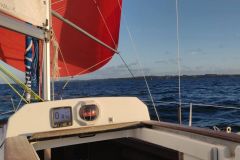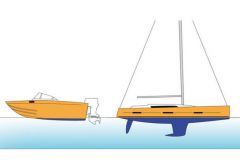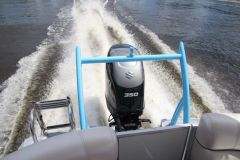As with all speeds other than upwind and downwind, the tight release is sometimes referred to as a bastard speed. These are wind angles that racers are less familiar with than others, as their courses often consist of upwind and downwind.
For sport cruisers or racers who prefer coastal courses, here are a few tips that will help you avoid off-track excursions and reveal the potential of your mount.
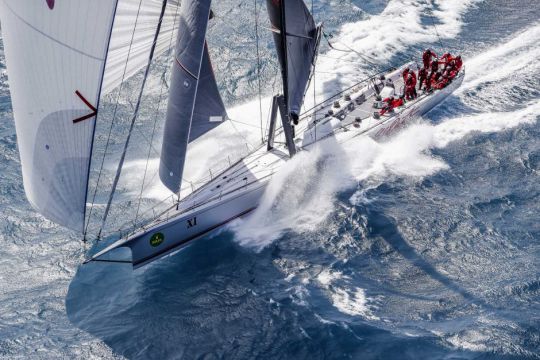
Take the time it takes before lofting
When you want to sail tight offshore, the first cause of failure is to luff before the crew and the boat are ready to engage in the battle of wind power against the stability of the yacht.
In these delicate conditions, the mainsail is sometimes your enemy, as its thrust will cause the boat to heel and luff. So, in order not to lose control too quickly, you start by flattening the mainsail by tensioning the halyard, the edging and the backstay. If necessary, do not hesitate to take a reef. The spinnaker, on the other hand, directs its thrust further forward and upwards, which tends to raise the bow and make the boat more "airy". To hoist the spinnaker, you have to do it in the right way, while being well down, and then you can start to luff.
If you're in a crew, the weight of the crew is one of the keys to success. Everybody should be in the maximum recall position and as far back as possible. If one or two crewmembers are downwind or on the foredeck, you have to wait for them to get into the lines before luffing.

Shock in the face of ridicule
Now that the crew is at maximum recall, it is the trimmers who control the balance of the sailboat. They will have taken care to bring the sheets around the winches to windward in order to constantly adjust without neglecting the abseiling.
A crew member must be assigned to report the gusts. Not only the helmsman, but also the trimmers have to "feel the boat in their buttocks". As soon as the boat heels a little, the mainsail and spinnaker sheets must be shocked to maintain a constant angle of heel.
At first, the sails are generously trimmed, then gradually reefed, which is how you manage to turn the reef into an acceleration of the boat. This point of sail is really sporty in the sense that the sails are continuously trimmed.
Trim sails for a tight release
The spinnaker guide must be stretched to advance the trough and open the leech.
With an asymmetrical spinnaker, some people release the tack to go broadside. When tightening the wind, the leading edge of the sail will have to be stiffened by tightening the tack.
If you have a symmetrical spinnaker, you must lower the spinnaker pole to tighten the leech and bring the spar as close as possible to the forestay. Be careful, the spinnaker pole must not rest on the forestay to avoid breakage in the event of a spinnaker snap.
For the mainsail, as we have seen above, it is often a trap for stability. You stiffen everything you can to limit its power and eventually take a reef. We will control the mainsail mainly with the downhaul, which we will have to release in the gusts.
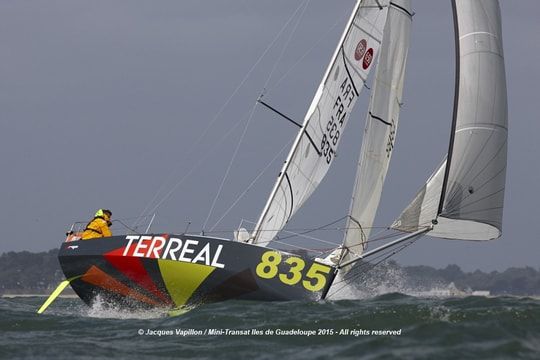
Steering and anticipating
Whilst upwind and downwind we steer with extreme smoothness, in the tight offshore we will have to adopt a sometimes aggressive steering style, but this will be largely compensated for by maintaining control and high speed.
In general, with a tight release, you sail with the rudder "loaded", i.e. with a lot of pressure in the rudder. To avoid going off course, you have to anticipate.
When the gust hits the boat and she just begins to heel, at this point you have to shoot down to maintain a controllable heel. Once the gust turns into acceleration, one can start to relocate, speed is a great help in sailing high.
The adjusters should be contacted and they should be shocked to knock down and tuck in while lofting. Watch the leading edge of the spinnaker and keep the "tear" indicating the correct setting. The more the spinnaker is shocked, the more the thrust is directed forward and upward, which limits the risk of starting from the luff.
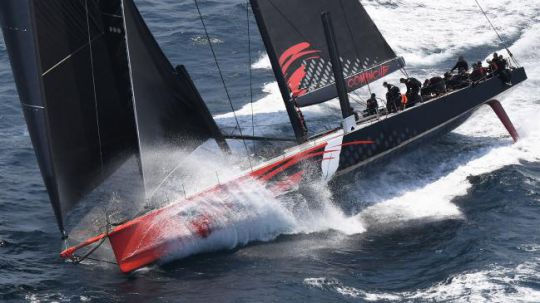
And in case of departure at lof??
You'll probably go to the lof, it's a consequence of the search for boundaries. One could say that if you haven't gone to the lof it's because you haven't touched the limits yet (or that you have a lot of talent on board).
If your boat heels too much and the hull effect pushes it upwind, the sails must be immediately shocked even if they have to be furled. It is better to hear the sails flapping than to see the spreaders in the water.
If the helmsman realizes that he is going to lose control, he must announce this to the crew, who will stand firm for their own safety. During a luff departure, in order to get down, the rudder is often jerked across the course, which is no longer effective.
In fact, we should momentarily give up shooting down and let the yacht make its departure from the lof. By maintaining speed, i.e. keeping the water flowing around the rudder and keel, you can quickly set off again once the boat is flat and the sails are unloaded. When you reach the downwind, it is time to trim the sails, which are slamming, and set off again to attack the tight release.
Join the brand
If in a banana regatta you have to send the spinnaker as fast as possible to the windward mark, here we'll be more circumspect. In the case of a tight release, if you are still undecided about the ability to carry the spinnaker, you have to attack the tack under genoa with settings optimised for these angles.
It may be possible to sail a little higher than the mark to optimise the loss of distance downwind when sending out the spinnaker. As soon as you are sure you can hold the spinnaker, you should send it without hesitation.
On a tight release it is difficult to know if you are making the mark, as the average heading fluctuates between a gust in the reef and loosening in the soft. And if you've made a mistake in your estimate, don't panic. Sailing 10° too low is nothing at all if you go fast and don't go to the heap every 5 minutes. At the right moment, you'll lower the spinnaker to end up under genoa at the right "full ballast".





